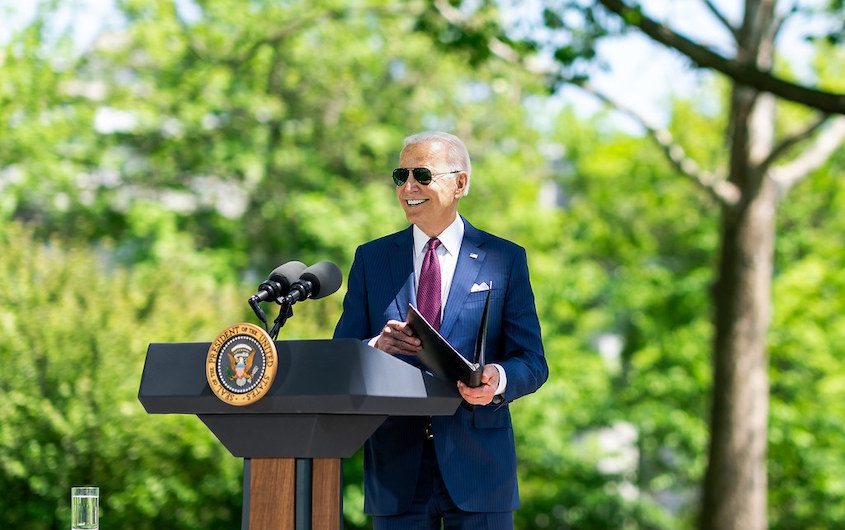
The U.S.-EU Summit Resets the Narrative on Trade

Peter S. Rashish
Vice President; Director, Geoeconomics Program
Peter S. Rashish, who counts over 25 years of experience counseling corporations, think tanks, foundations, and international organizations on transatlantic trade and economic strategy, is Vice President and Director of the Geoeconomics Program at AICGS. He also writes The Wider Atlantic blog.
Mr. Rashish has served as Vice President for Europe and Eurasia at the U.S. Chamber of Commerce, where he spearheaded the Chamber’s advocacy ahead of the launch of the Transatlantic Trade and Investment Partnership. Previously, Mr. Rashish was a Senior Advisor for Europe at McLarty Associates, and has held positions as Executive Vice President of the European Institute, on the Paris-based staff of the International Energy Agency, and as a consultant to the World Bank, the German Marshall Fund of the United States, the Atlantic Council, the Bertelsmann Foundation, and the United Nations Conference on Trade and Development.
Mr. Rashish has testified on the euro zone and U.S.-European economic relations before the House Financial Services Subcommittee on International Monetary Policy and Trade and the House Foreign Affairs Subcommittee on Europe and Eurasia and has advised three U.S. presidential campaigns. He is a member of the Board of Directors of the Jean Monnet Institute in Paris and a Senior Advisor to the European Policy Centre in Brussels. His commentaries have been published in The New York Times, the Financial Times, The Wall Street Journal, Foreign Policy, and The National Interest, and he has appeared on PBS, CNBC, CNN, and NPR.
He earned a BA from Harvard College and an M.Phil. in international relations from Oxford University. He speaks French, German, Italian, and Spanish.
__
Yesterday’s U.S.-EU Summit in Brussels was remarkable simply for taking place, as it was the first since 2014.
But even more striking was the way U.S. President Joe Biden characterized the European Union’s role—perhaps best summed up by what he said during a conversation with French President Macron at the weekend’s G7 gathering: “I for one think the European Union is an incredibly strong and vibrant entity…that has a lot to do with the ability of Western Europe to not only handle its economic issues but also provide the backbone and support for NATO.”
No sitting U.S. President has ever endorsed the strategic importance of the EU in such clear terms.
While expressed in less dramatic language, the U.S.-EU Summit Statement also marks an important shift in the transatlantic narrative about trade, striking a new balance—one better adapted to today’s unruly global economy—among the rightful goals of trade policy: prosperity, values, and security.
What stands out in the leaders’ declaration is not the traditional (and still important), macroeconomic goal of trade policy with which it leads—”We commit to grow the U.S.-EU trade and investment relationship”—but rather what comes next, a commitment to use trade policy to achieve five key objectives:
- Fighting climate change and protecting the environment
- Promoting workers’ rights
- Expanding resilient and sustainable supply chains
- Cooperating on emerging technologies
- Protecting workers and firms from unfair trade practices by non-market economies
By placing the emphasis on these matters that engage common U.S.-EU values and security, Biden and his EU counterparts—Commission President Ursula von der Leyen and Council President Charles Michel—have started the process of equipping the transatlantic economic relationship for a joint approach to the systemic rivalry with China’s state capitalist model, even if—in a nod to some European sensitivities—the statement does not mention the world’s second largest economy by name.
“The U.S.-EU summit marks an important shift in the transatlantic narrative about trade, striking a new balance—one better adapted to today’s unruly global economy—among the rightful goals of trade policy: prosperity, values, and security.”
There are three additional aspects to the summit’s trade outcomes that have longer-term significance.
First, as expected, the leaders agreed to establish a U.S.-EU Trade and Technology Council. While policies matter more than institutions, the launch of the TTC is promising, especially as beyond a focus on deepening bilateral relations they affirm that “cooperation within the TTC will also feed into coordination in multilateral bodies and wider efforts with like-minded partners, with the aim of promoting a democratic model of digital governance.” That heralds a potential future U.S.-EU alignment on efforts to set global standards for new technologies like artificial intelligence.
Second, the two sides have agreed that “plurilateral mechanisms can provide a means for addressing new trade concerns when multilateral solutions are not possible” in the context of updating WTO rules, which could lead to restarting the trilateral process on subsidies and state-owned enterprises (if perhaps under a different name and in a slightly different form).
Finally, after 17 years the United States and the European Union were able at the summit to reach a five-year truce on the Boeing-Airbus subsidies disputes, which has led to WTO-authorized—but no less harmful—retaliatory tariffs of a combined $11.5 billion on each other’s exports. This agreement will now allow the two sides to focus on a larger concern identified in its annex: a common transatlantic interest in “sustaining their large civil aircraft sectors…in the face of new state-financed competitors from non-market actors”—i.e., China.








